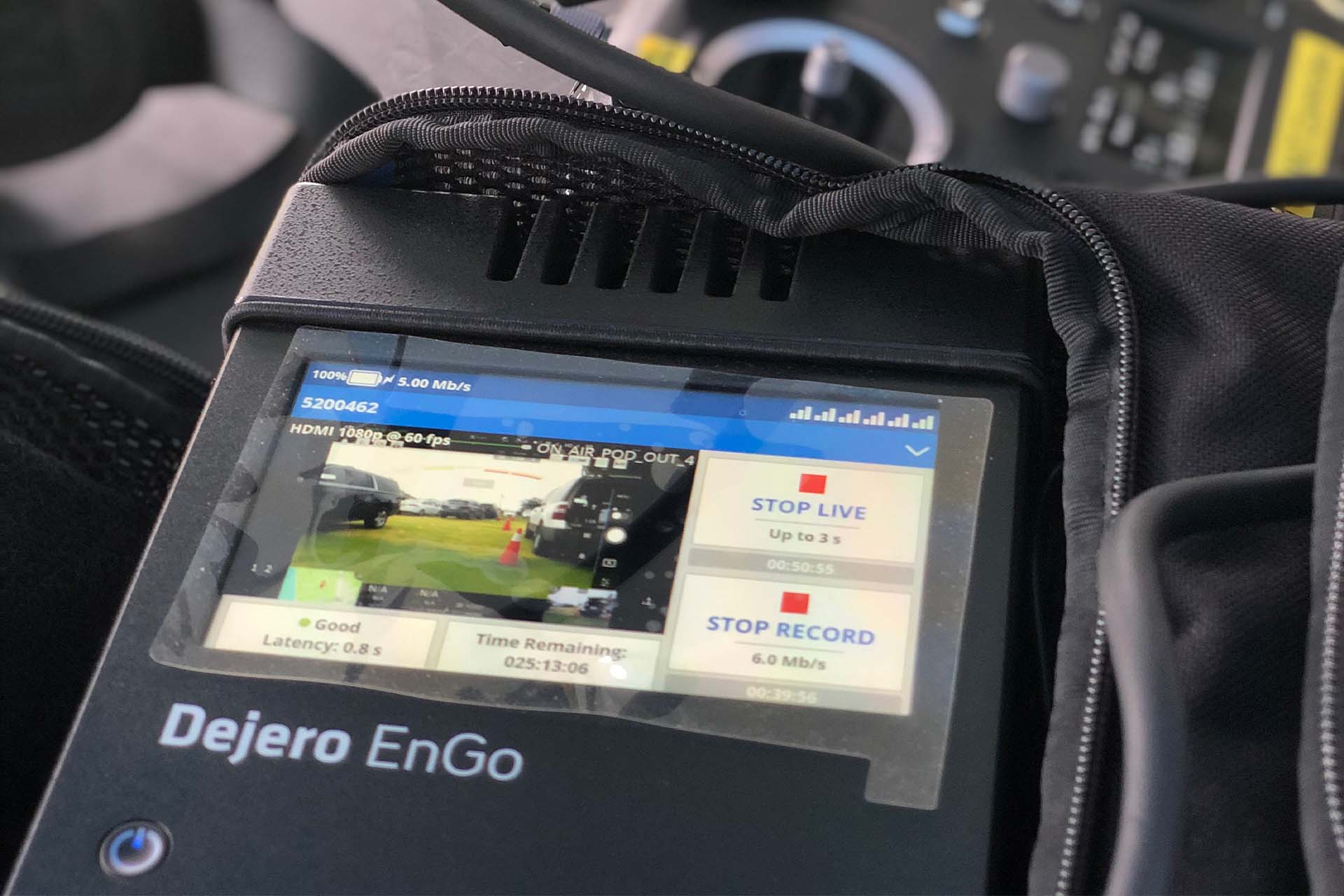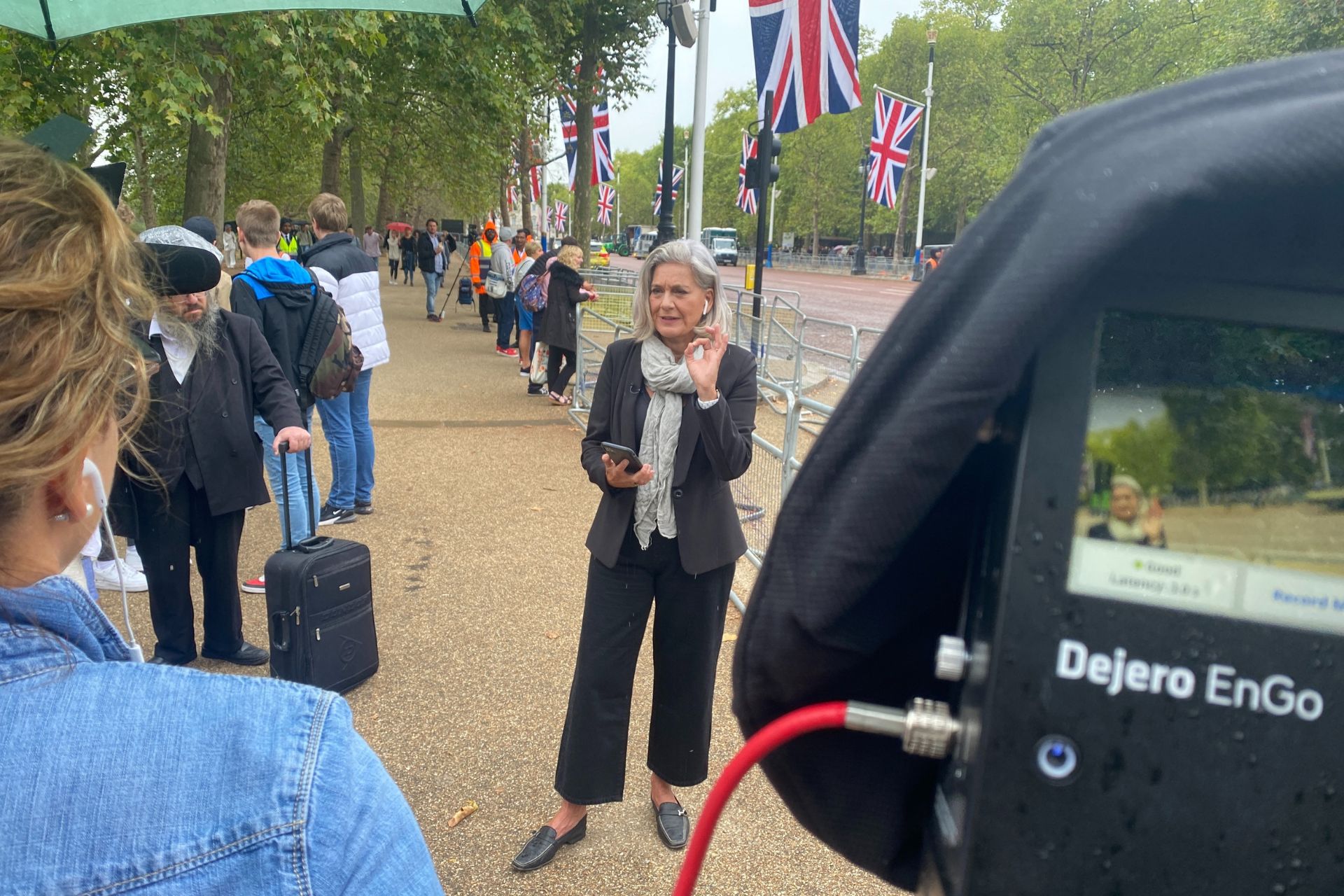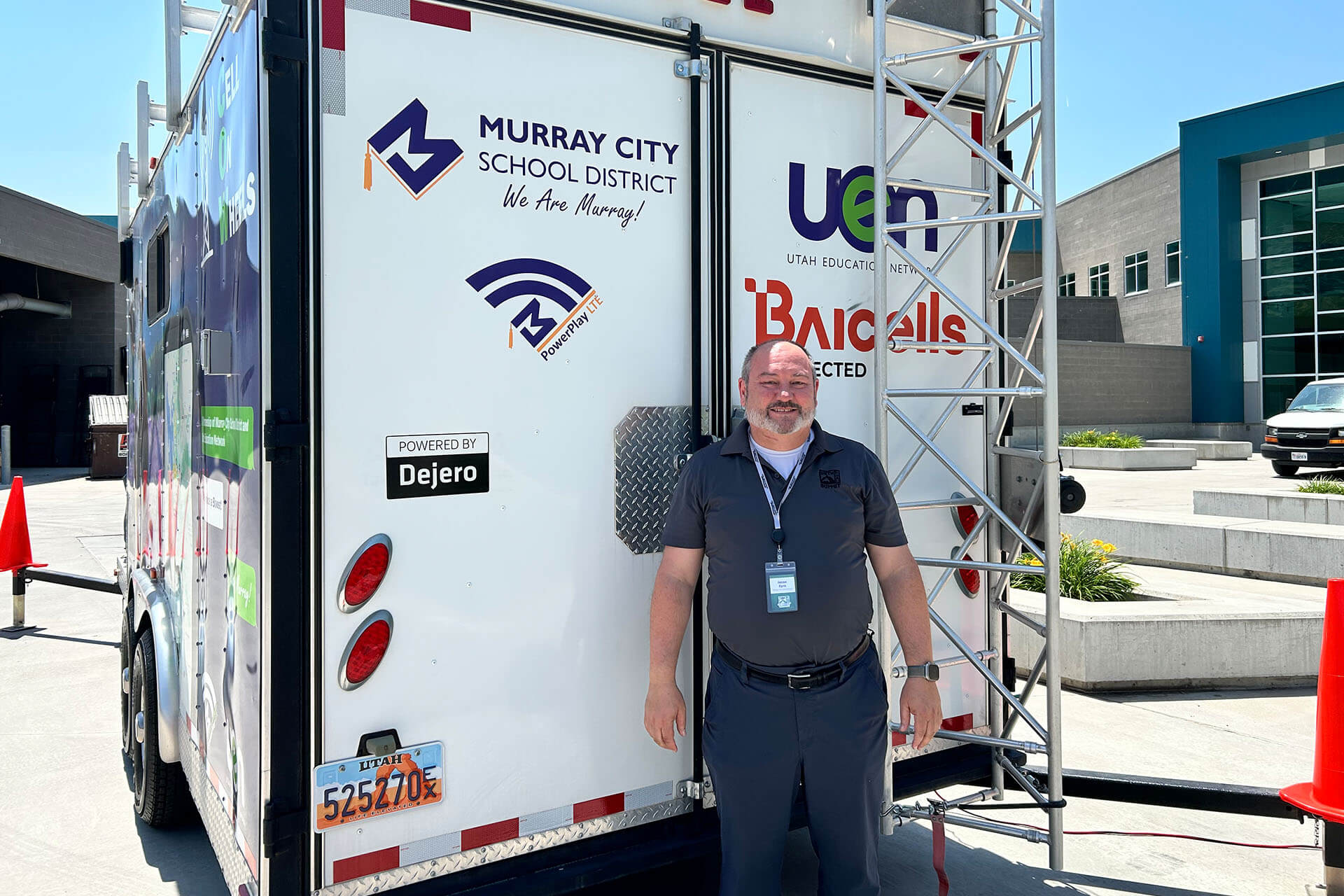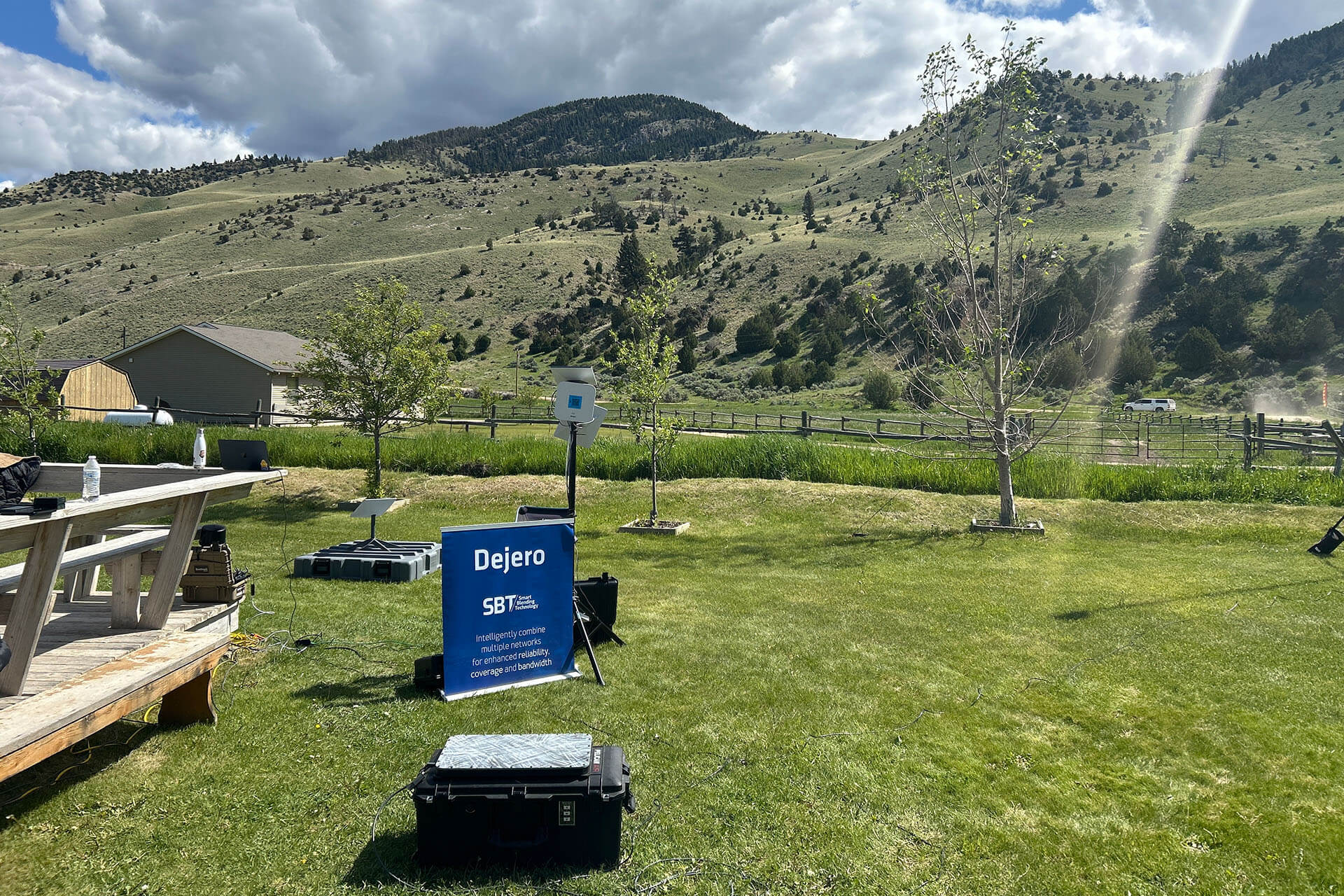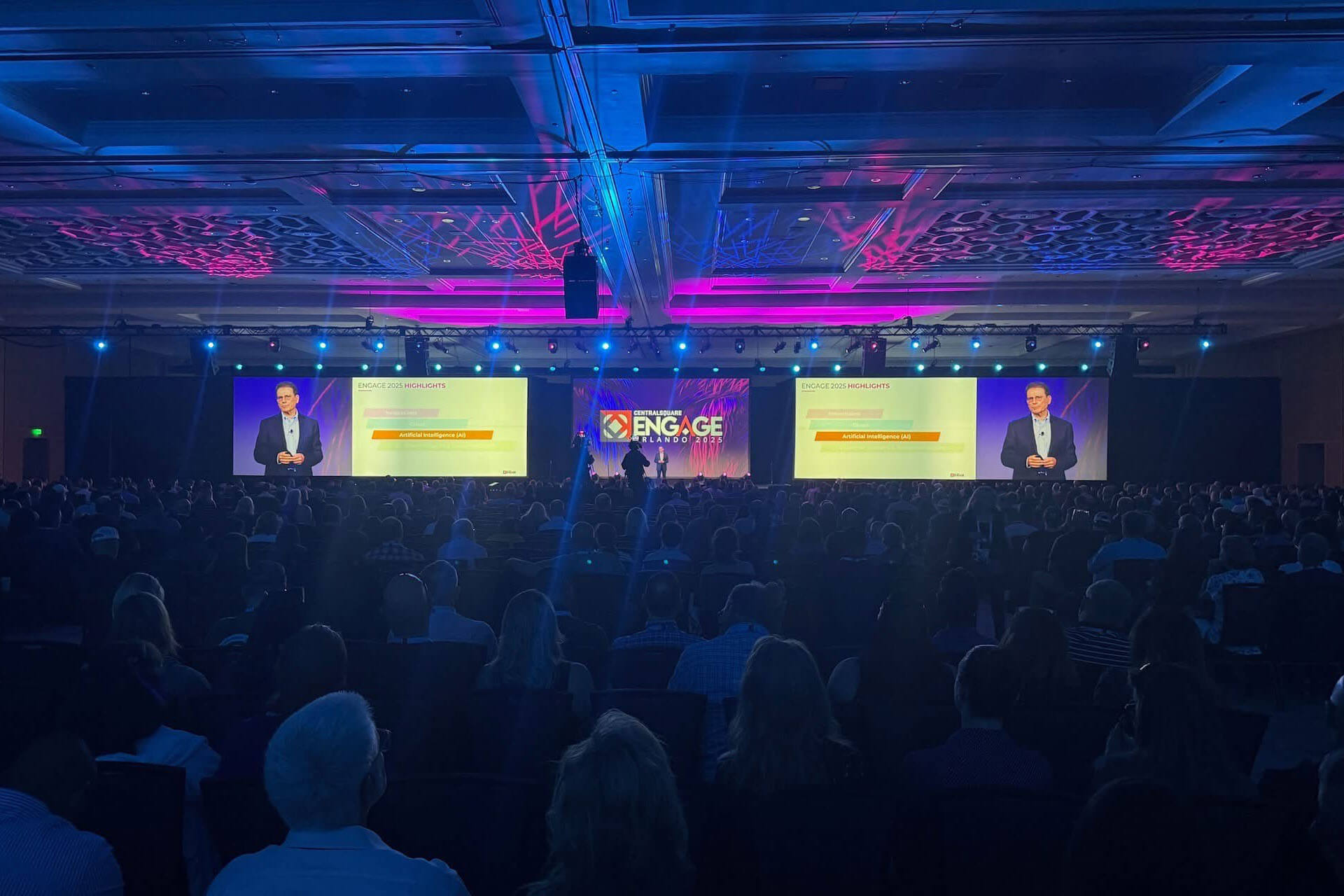When breaking news happens, broadcasters need to hit the ground running. In today’s 24-hour news cycle, every moment counts when you’re trying to get the story out.
On September 8, 2022, news broke that Queen Elizabeth II was under medical supervision at her home in Scotland, as doctors were concerned for her health. As the day progressed, viewers watched in real-time as Royal Family members gathered at Balmoral Castle, and awaited another statement from the palace. And then it came: England’s longest reigning monarch, who had been on the throne since 1952, passed away at 96.
As the Queen of not just the United Kingdom but also over a dozen commonwealth countries around the world, her death was an international headline. News outlets across the globe traveled to London to cover the story—and they weren’t the only ones.
The Dejero team mobilized quickly to support customers with equipment rentals, local SIM cards, and on-the-ground support.
Award-winning news veteran Lisa LaFlamme is among the journalists leading Queen Elizabeth’s funeral coverage in Canada. Finding a prime spot to cover the story wasn’t the problem but rather retaining a resilient connection.
“The greatest challenge in bringing this extraordinary outpouring of love and respect for the Queen back home to Canadians is securing a satellite signal. Without it we go dark,” explained LaFlamme. “The Dejero team on the ground in London raced to our live position one day in the pouring rain to help us get the CityNews morning show, Breakfast Television, on the air. It’s great to know a company from my own hometown has our back at Buckingham Palace.”
Some broadcasters have been preparing for this moment for years, keeping prime locations near Buckingham Palace on retainer to ensure the best coverage views. But for others, the news was sudden, and there was little time to prepare before they hopped on a plane or train for their assignment. Challenges abound in situations like these, from congested networks to figuring out which SIMs for international carriers will be the best option to finding the right balance of solid connections and exciting shots for live hits.
“There are many variables and potential for obstacles with live productions, so we always try to do our best to prepare for all contingencies by having a local team on the ground, ready to help and to craft real-time solutions to ensure network continuity,” shared Daniel Skoog, Dejero product manager.
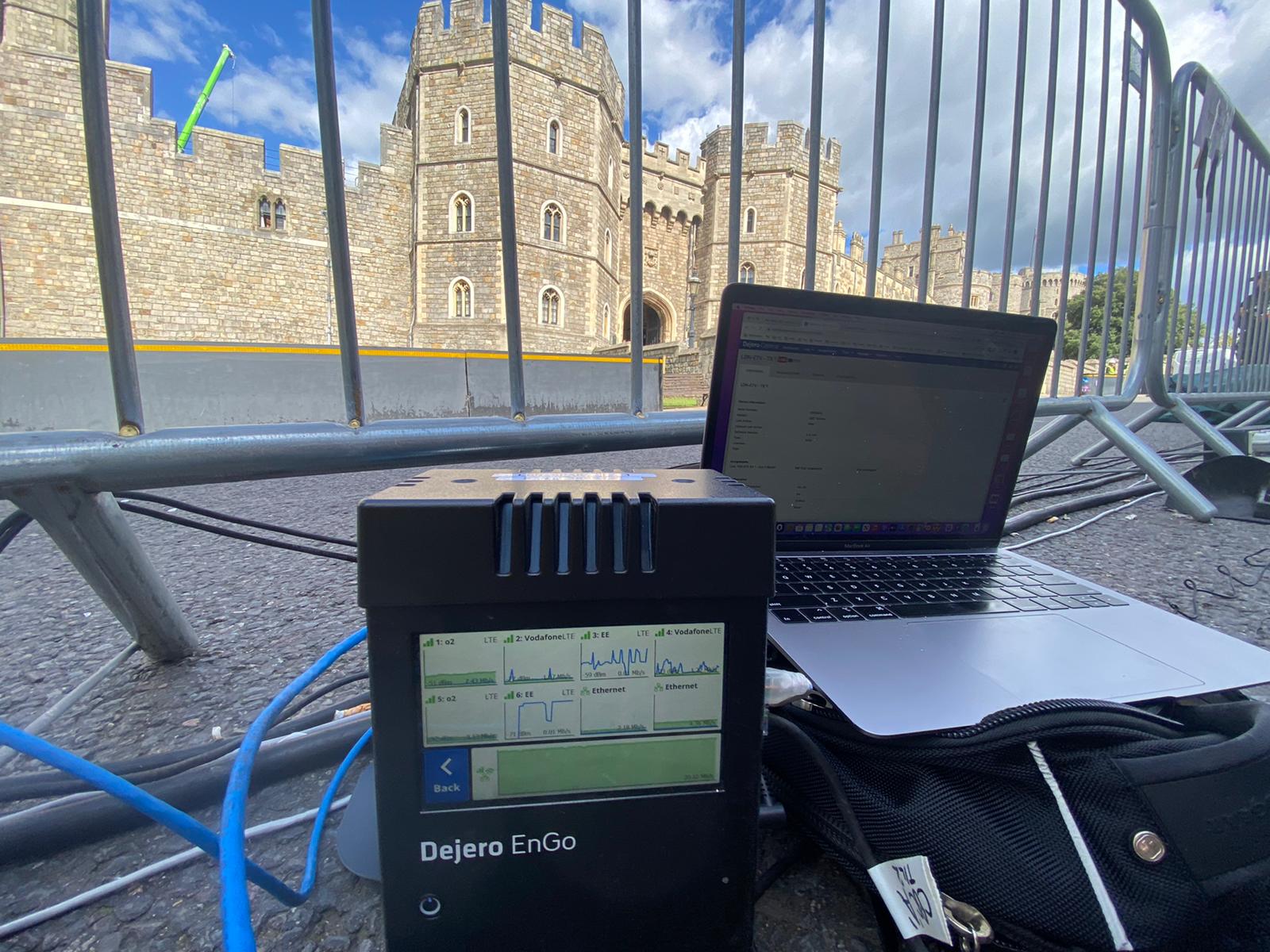
Being on the ground, our support team could go above and beyond, offering technical support and advice on where our customers could find the best spots with the best signal for their coverage and helping swap out SIMs to adjust for local network availability.
“The key to resilient connectivity is connection diversity,” according to Skoog. “We designed the EnGo mobile transmitter with six modems to ensure that we could get the most out of each network for the strongest connection possible, even in crowded areas where networks can get overloaded.”
When it comes to providing the most resilient connectivity options, we leveraged our data from long streams and other content being shared to find the most effective SIM and location combinations to go live and meet the expectations of their audiences.
“When you’re in a place you’re not familiar with but still need to get your story out as soon as possible, having someone who’s already done some of the legwork for you can be invaluable,” said Sukhvir Grewal, technical account manager at Dejero. “That’s what we were trying to do for our customers on the ground—find the best options and help ensure they can do their job as effectively as possible. That’s the Dejero difference. We understand what they need, and can help them not only technically with our equipment but the job they are there to do.”
With over 2,000 dignitaries, celebrities, authors, and more attending the Royal funeral on Monday, including Canadian Prime Minister Justin Trudeau and United States President Joe Biden, along with thousands more spectators, connectivity would be a challenge for some. Dejero expanded its solution, blending satellite with cellular for an even more robust connection for broadcasters.
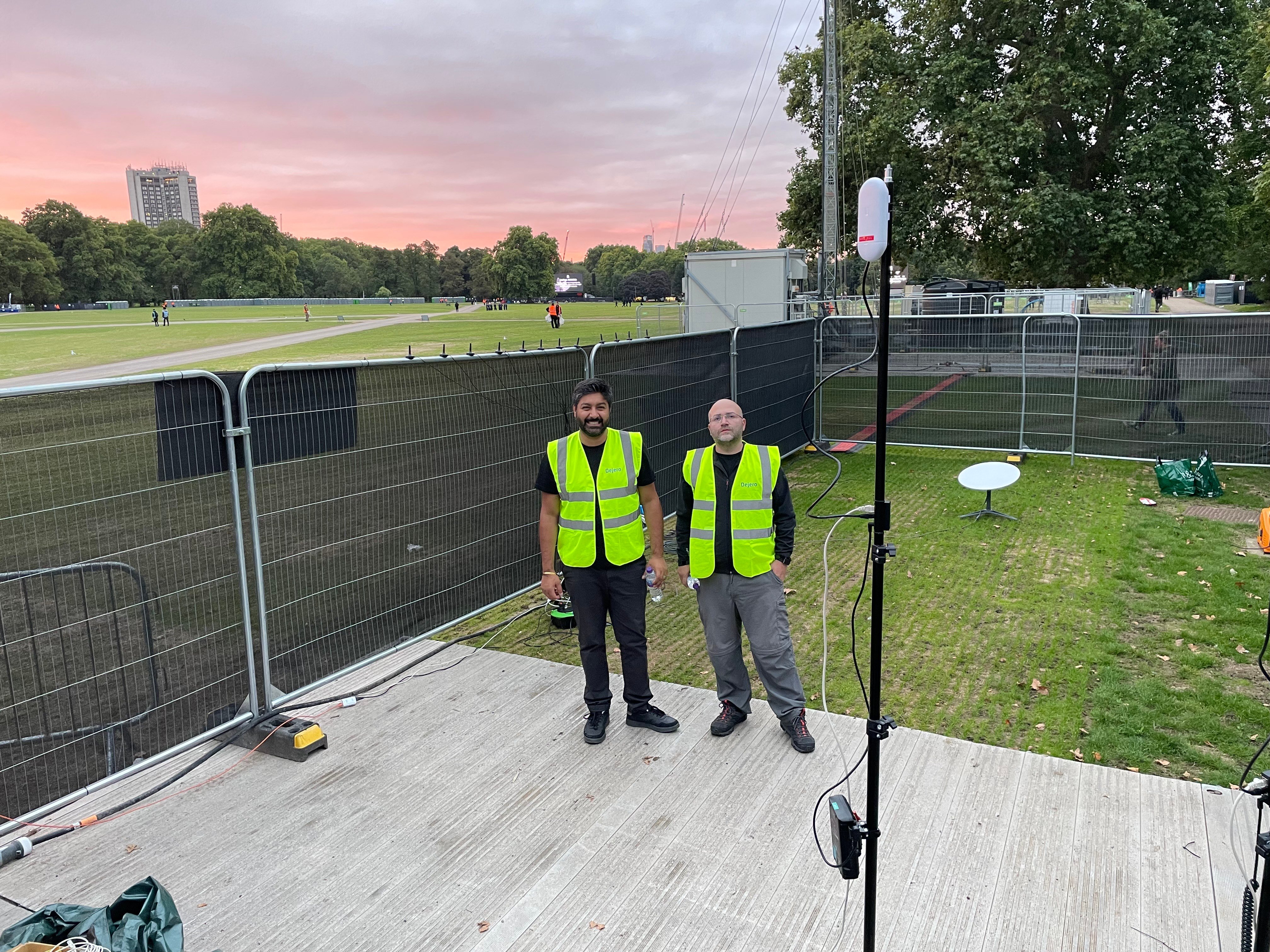
Over 40,000 live streams from almost 3,000 devices were deployed through Dejero technology in eleven days, resulting in 55,000 hours of coverage. And we were there every step of the way to help our customers.
“Dejero customer service during ‘Operation London Bridge’ was gold class. While our crews were preparing for deployment to the UK, Network 10 reached out to Dejero for local data packages. They responded immediately and offered a solid solution. Rather than just providing data for our EnGos, Dejero provided three EnGo transmitters to our crews loaded with local data packages. Our crews could hit the ground running with the locally optimized EnGos, ensuring we could achieve the best cellular network coverage,” commented Rafael Oort, Paramount/Network 10 Australia. “When an IFB fault with one of the rental units occurred in the field, they responded quickly and hand-delivered a replacement themselves directly to our crews on the ground the following day. Live global news events like these require support that is agile, adaptable and matches the same urgency as the breaking story. Dejero treats their customers like royalty.”
Ever since Dejero technology was used for the first live transmission of the torch relay in 2009, we’ve been committed to being more than just another technology provider for broadcasters, we’re partners who understand their industry and design our products with them in mind.
Learn more about how our connectivity solutions can help you go live from anywhere.

